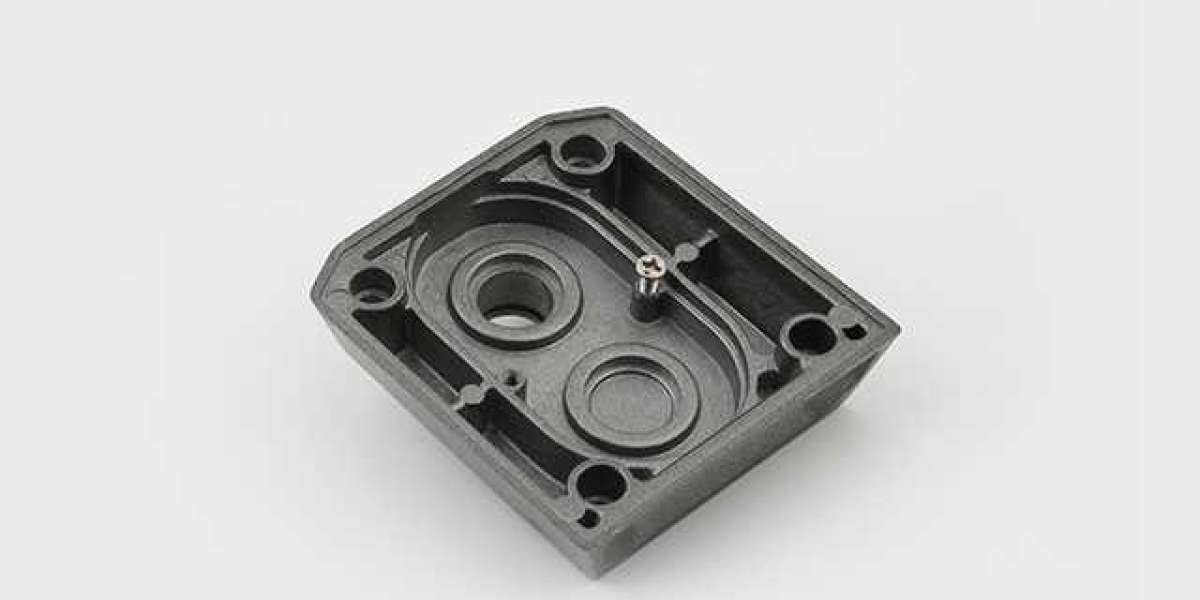By making modifications to the zinc alloy die-casting process, researchers were able to investigate the impact that rare earth alloys have on the microstructure as well as the properties of zinc alloy die-casting. The study of the effect of rare earth alloys was made possible as a result of this. The findings are laid out in the previous section. At the same time, researchers looked into and talked about the function of the elements that make up rare earth alloys. This led to the discovery of an effective method for further improving the mechanical properties of die-cast zinc alloys as well as their resistance to intergranular corrosion.
Intergranular corrosion is the most common defect that can be found in traditional die-cast zinc alloys, and it is the primary factor that contributes to the finished product's low quality. Because of this, manufacturers all over the world, including Yuge, utilize zinc that has a high purity and is low in impurities, and they control the chemical composition of die-cast zinc alloys in a very stringent manner. This is done in an effort to lessen the likelihood of intergranular corrosion occurring.
In order to achieve this goal, the experiment is centered on determining the effect that a rare earth modification treatment has on the metallographic structure as well as the mechanical properties of die-cast zinc alloys. This experiment aims to obtain a new die-cast zinc alloy that has improved performance and greater adaptability, and at the same time, it aims to provide a reference for the addition of rare earths to die-cast zinc alloys. Both of these objectives will be accomplished if the experiment is successful. The protocol for the examination
During the course of the experiment, the following components were utilized: a No. 1 zinc ingot, a No. 1 electrolytic copper ingot, and a No. 1 nickel ingot. Smelting equipment such as a graphite crucible and a 45 kW crucible resistance furnace were utilized in the process of the test. An appropriate quantity of rare earth alloys nodular cast iron has been added to a die-cast zinc alloy known as ZnAl4-1 (Al3.2% Cu0.73% 1.25%, Mg0.06%, and the rest is Zn). The experiment uses this material. The purpose of the experiment is to investigate the influence that the incorporation of rare earth alloys has on the metallographic structure as well as the mechanical properties of alloys. Copper and various rare earth elements are mixed together to create a master alloy, which is then incorporated into the material.
The following is the procedure that must be followed when melting:First, heat the graphite crucible until it turns a dark red color; then, put aluminum ingots and aluminum-copper master alloy into the crucible; then, wait until some of the aluminum liquid appears in the crucible; and finally, remove the aluminum ingots and aluminum-copper master alloy from the crucible. In the final step, a covering agent should be added so that it makes up approximately 2% of the total weight of the charge. The covering agent consists of a concentration of 40% NaCl, a level of 20% KCl, and a level of 60% Na3AlF combined together.0.3% of the total weight of the charge is made up of C2Cl6, which means that percentage represents nodular cast iron how much of the compound is present. The temperature of 550 degrees Celsius is the point at which the liquid will melt. After the ingots of zinc alloy have been poured, the process of die casting can be performed on them. According to the results of various tests and studies, the effects of rare earths on the microscopic box phase structure of die-cast zinc alloy are as follows:
1) The effect of the casting process on the structure
Die-cast hypoeutectic zinc alloys contain approximately 4% aluminum and are the primary component of hypoeutectic alloys. The equiaxed phase of the ZnAl4-1 alloy that has been modified tends to have a more uniform distribution and is smaller after the treatment when compared to the ZnAl4-1 alloy that has not been subjected to any modification treatment whatsoever. This is the case when compared to the ZnAl4-1 alloy that has not been modified in any way. The eutectic region grows larger, and the overall structure appears to be more consistent and well-balanced as a result.
Many equiaxed phases and grain boundary corrosion-prone phases have gradually transformed into eutectoid phases as a result of the effect that rare earths have had on the material. Because of this, the conditions are created for the improvement of the mechanical properties of alloys, the reduction of the amount of intergranular corrosion, and the improvement of the material's resistance to the effects of aging. In addition, in order to acquire a more in-depth comprehension of the distribution of the primary elements in the alloy after it has been modified, it has been reached the conclusion that the ZnAl4-1 alloy has been modified. This conclusion was reached in order to gain a deeper comprehension of the distribution of the primary elements in the alloy. The distribution of aluminum, copper, and elements that have undergone modification is relatively even, and there is no enrichment even in the cast state. It has been established beyond a reasonable doubt that the modified ZnAl4-1 alloy contains rare earth elements distributed consistently throughout its entirety.
2) The effect on the underlying structure of the parts that are produced by die casting
The structure of the ZnAl4-1 alloy die-casting after modification is more refined, diffuse, blunt, and uniform than that of the ZnA14-1 alloy when it is in either the primary phase or the eutectic phase. This is true whether the alloy is in the primary phase or the eutectic phase. This is the case regardless of whether the structure is examined from the perspective of the primary phase or the eutectic phase. Shenzhen Yuge used the specimens that were specified in JB3072-82 in order to measure the alloy's mechanical properties. This allowed them to determine the influence that rare earth elements have on the mechanical properties.
In addition, the die-casting process parameters of the specimens were controlled so that they fell within the following ranges: die-casting temperature 420440°C, mold temperature 130150°C, injection specific pressure 450MPa, filling speed 1215m/s, and holding time 30 minutes. The temperature of the mold was also controlled so that it fell within the same range as the die-casting temperature. In order for the effects of the rare earth modification Powder Coating Cast Aluminum treatment to be maximized, this was done. A b value of 298 MPa and a b value of 2 are both associated with the modified ZnAl4-1 alloy. At the same time, in order to further confirm the reliability of the test, microcomputer statistics were used to sort out the test data obtained under different conditions for the unmodified ZnAl4-1 alloy and the modified ZnAl4-1 alloy. This was done in order to compare the results of the two types of ZnAl4-1 alloy. This was done so that the results of the two different types of ZnAl4-1 alloy could be compared and contrasted.
In addition, the alloy solidification shrinkage was evaluated, and the findings demonstrated that the tensile strength and hardness of the ZnAl4-1 die-cast zinc alloy treated with rare earth modification increased by more than 10% in comparison to the ZnAl4-1 die-cast zinc alloy that did not include any modification at all Powder Coating Cast Aluminum. This was in comparison to the ZnAl4-1 die-cast zinc alloy that did not include any modification at all. During the processing of the latter, there is a decreased tendency for cracking and deformation, as well as an improvement in surface finish and an increase in the rate of qualification.
In addition, the surface finish and the qualification rate both improve. If between 0.5 and 1 percent of rare earth is added to die-cast zinc alloy, it is possible to produce significant changes in the metallographic structure characteristics of the material. The structure can be optimized, the grains can be refined, impurities at the grain boundaries can be removed, and the damaging effects of impurity elements can be suppressed if this is done. When compared to a ZnAl4-1 die-cast zinc alloy that has not been modified by rare earth modification, the former has a lower tendency for intergranular corrosion. This is because the former has been modified by rare earth modification.








